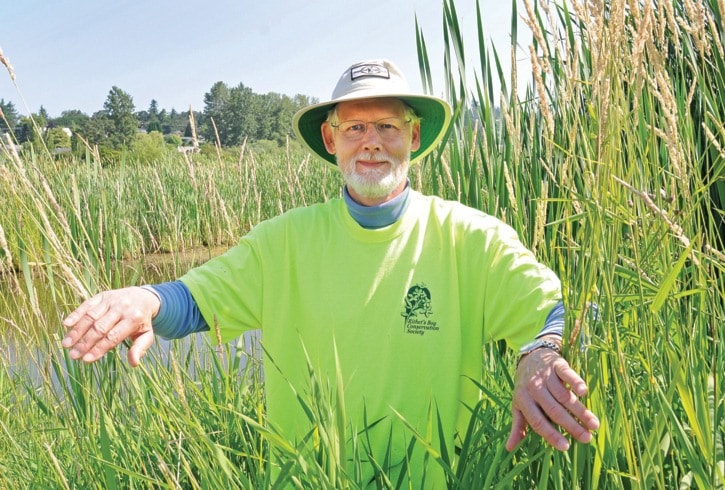Rithet’s Bog has its invaders, the usual suspects – blackberry bushes, reed canarygrass and broom.
A frustratingly aggressive variety of invasive cattail can grow three metres tall, and has spread like weeds through part of the wetlands to choke out waterfowl and native plants alike.
The 28 hectare conservation area in Saanich is even home to a band of feral cats, which tend to menace the ground-nesting birds. But what is making a group of volunteer conservationists nervous is the periodic croak of an American bullfrog, one of the most dreaded of all invasive species.
Rithet’s Bog Conservation Society president Russ Pym said he and other volunteers have heard the call of the bullfrog over the past few years, and a few have been captured. It's likely they've migrated from Elk and Beaver lakes.
A saving grace for the bog is its tendency to dry up in the summer. Bullfrogs, known for being voracious eaters of anything they can get their mouths around, need year-round water bodies for tadpoles to hatch and grow.
“I would expect except for (the dry season), we would have a breeding population of bullfrogs,” Pym said. “If we have a couple wet years and open water that doesn’t dry up, that might change. There’s no reason they can’t breed there.”
American bullfrogs have gained a foothold in Elk and Beaver Lake and a number of lakes on the West Shore. In response, over the past eight years, the Capital Regional District and partner municipalities have hired biologist Stan Orchard to eradicate the frogs from regional water bodies. He uses his invention called the “electro-frogger” to zap and stun the animals.
Rithet’s bog isn’t there yet in terms of hiring frog hunters, but Pym said if bullfrogs manage to have a breeding season in the bog, they would be difficult to eradicate. “The best you can hope is for controlling the population,” he said.
Rithet’s bog is held up as the last significant peat bog in the lower Island, but Pym notes there isn’t much peat left at all – he calls it a bog-forest. But it is home to native amphibians such as red legged frogs and Pacific chorus frogs, and scores of birds, all which could be hopping, squawking meals to invading bullfrogs.
“The bullfrogs are definitely a concern to us,” he said. “It’s a problem we definitely need to keep an eye on.”
editor@saanichnews.com
